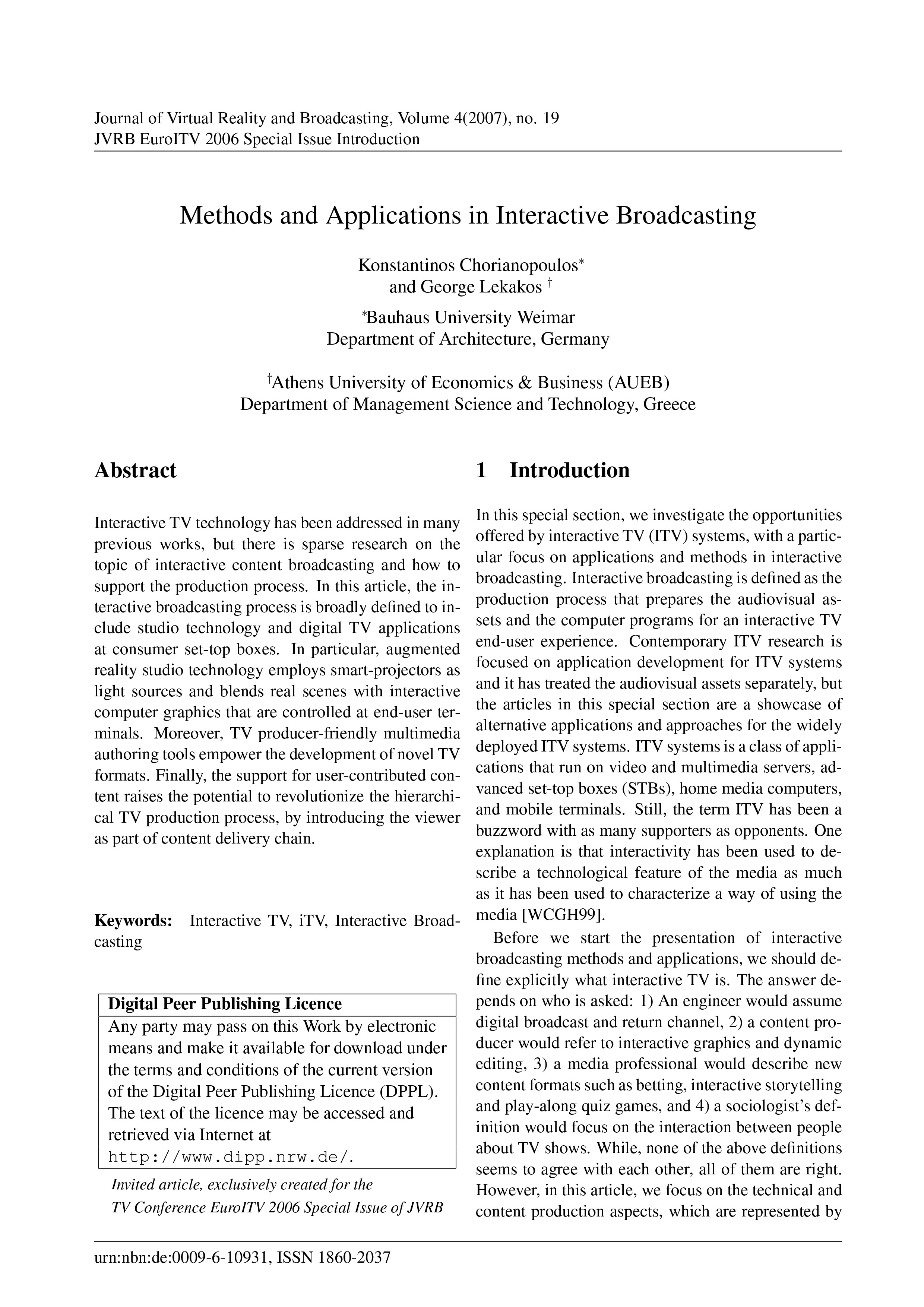Methods and Applications in Interactive Broadcasting
DOI:
https://doi.org/10.20385/1860-2037/4.2007.19Keywords:
Interactive Broadcasting, Interactive TV, iTVAbstract
Interactive TV technology has been addressed in many previous works, but there is sparse research on the topic of interactive content broadcasting and how to support the production process. In this article, the interactive broadcasting process is broadly defined to include studio technology and digital TV applications at consumer set-top boxes. In particular, augmented reality studio technology employs smart-projectors as light sources and blends real scenes with interactive computer graphics that are controlled at end-user terminals. Moreover, TV producer-friendly multimedia authoring tools empower the development of novel TV formats. Finally, the support for user-contributed content raises the potential to revolutionize the hierarchical TV production process, by introducing the viewer as part of content delivery chain.
Published
2007-07-31
Issue
Section
EuroITV 2006





